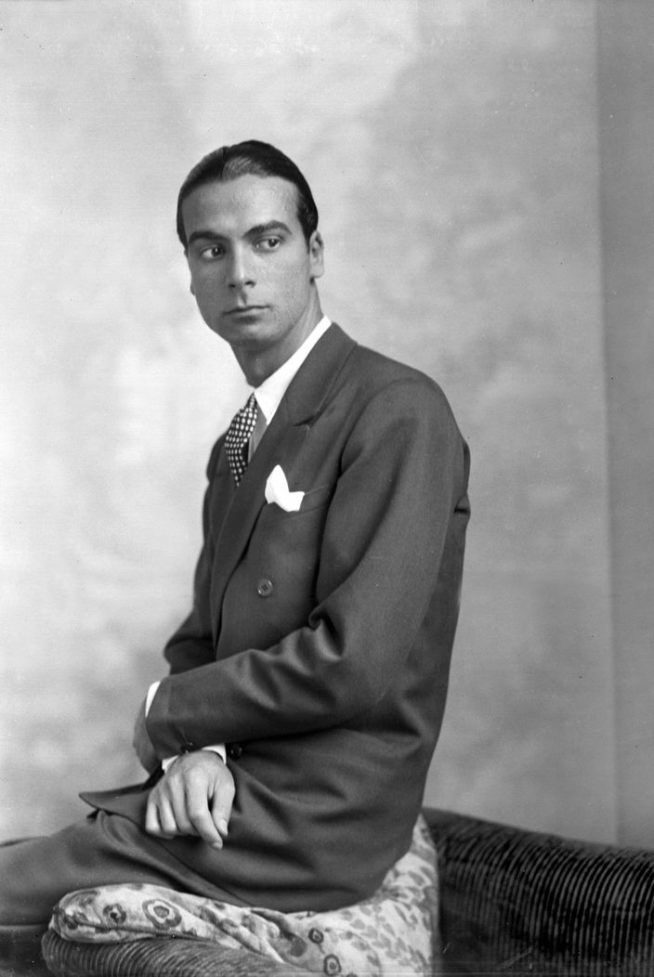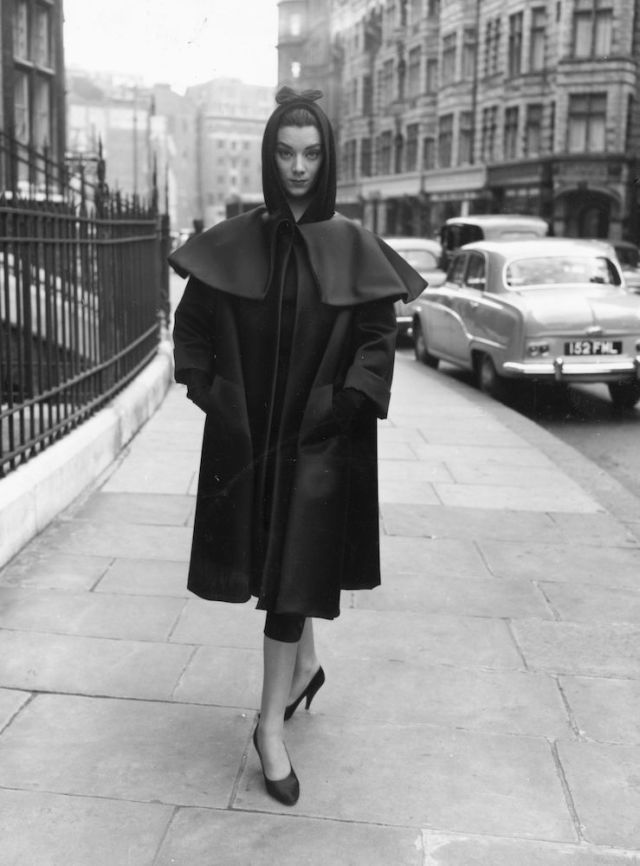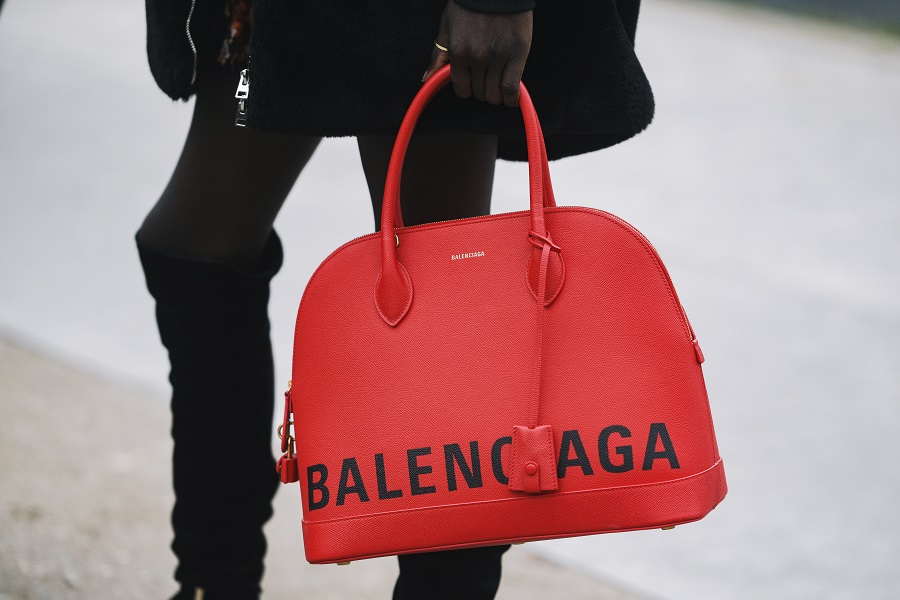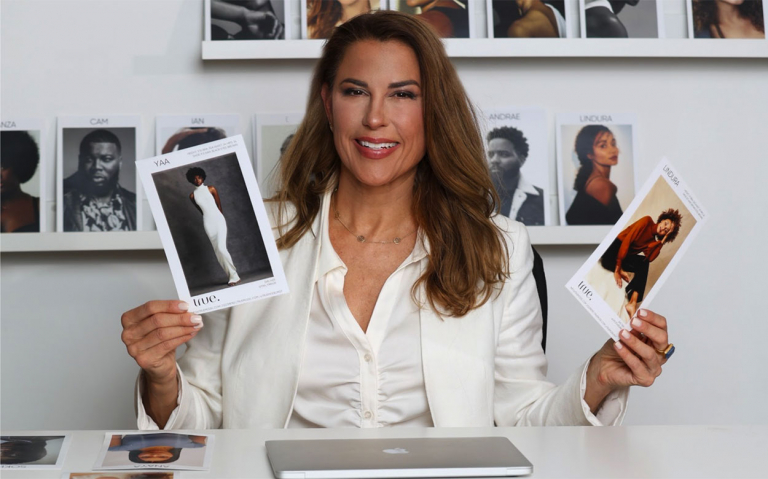Balenciaga made many headlines in May 2022. The brand, known for its critical fashion shows and mainstream appearance, launched new sneakers and presented its latest drop on the catwalks in the last month.
However, all his actions and launches carry with them an ironic and controversial tone that, at certain points, does not always bring both sides of the coin.
If you thought we were talking about the new Paris Sneakers and the show that took place at the Wallstreet, in NY, you’re right. But, when talking about these last two actions of the brand, it is also necessary to bring to the table the criticism they brought. Nothing in fashion is by chance, everything has an explanation, a reason. And that’s what we’re going to talk about in this article.
A touch on Balenciaga’s story
Cristóbal Balenciaga was born on January 21, 1895, in the quiet town of Getaria, in the Basque region of Spain. The son of a simple fisherman and a seamstress, Cristóbal Balenciaga Eizaguirre, even as a young man, was sponsored by the Marquise of Casa Torrés. His first contact with fashion was through his mother, but who introduced him to the world of haute couture was the Marquise. At the age of 12, it was for her that he designed his first dress.

Some say he didn’t get a formal education, while others affirm he got a degree in tailoring. In any case, no one can deny is his talent for well-crafted couture pieces. In 2017, he opened his first atelier, in the city of San Sebastian, northern Spain. And so began the success of the designer and entrepreneur.
Shortly after, he opened two more units in the city of Barcelona and Madrid. There, he provided exclusive services to the Royal Family and members of the country’s high court.
Due to the Spanish Civil War, Critóbal was forced to close the Spanish stores. In this scenario, he went to Paris, in 1937 – a place he had already visited several times.
On Parisian soil, the stylist opens Casa Balenciaga, at 10 Avenue George V. The luxury address had Wladzio Jaworowski and Nicolás Bizcarrondo as partners and investors. In 1938, he presents his first collection – which was acclaimed by critics and the press.
The pinnacle of Cristóbal’s success
The designer was not like other artists in the region. He didn’t invest in ultra-feminine pieces with well-defined curves. No wonder he became known as a “fashion architect”. His pieces featured more structured constructions, wider shoulders and silhouettes and truly sculptural shapes.
After the war, Cristóbal offered an alternative to Dior’s ‘New Look’. With it he brought a nipped-in waist, championing an empire line silhouette instead. As Elle remembers, Dior himself called Balenciaga ‘the master of us all.’ He was also admired by other iconic names, such as Coco Chanel.
In the 1950s, Balenciaga reached its peak. It was acclaimed and featured iconic models with every release. In 1955, he created the tunic dress; in 1957, new creations became great successes for the designer, such as the bag dress, shirt dress and the baby doll dress.
Balenciaga’s Style

Balenciaga has been a disruptive and subversive brand since its origins. His creations have always been groundbreaking.
The stylist explored his Spanish origins to create luxury items. This explains the prevalence of the color red (used by bullfighters) in all his creations. In addition, Balenciaga was inspired by the famous and admirable flamenco dance. Many painters also influenced him, such as Diego Velázquez and Francisco Zurbarán.
The main characteristics of the Balenciaga style were the perfect lines, the square cuts, the tight waist, and the hips with rounded tendencies. Apart from that, the fabrics of the highest quality and beauty also stood out.
In the wave of modern and unique creations, he launches the first collections of black dresses with wide shoulders and narrow fit, jackets that we now call ‘oversized’ and embroidered boleros. All this took place between 1939 and 1946. During this same period, he launched his first perfume, Le Dix. In 1951, the wide-shouldered, low-waisted style became a strong trend in the women’s fashion world.
A strong personality
The simple origin couturier was known for having a strong personality. He had a very reserved way of life, being a little averse to press interviews. But this did not interfere with the media’s coverage of his talent and domain of true art of sewing.
In fact, Balenciaga had a famous phrase, remembered to this day. He said that “A couturier must be an architect of design, a sculptor of form, a painter of color, a musician of harmony, a philosopher of measure”.
The – temporary – end of the brand
In the 1960s, society began to change drastically, changes that, of course, were reflected in fashion. Modern women wanted to decide what they’ll wear. Thus, Cristóbal Balenciaga, as well as several other haute couture houses, felt the impact of the decrease in their sales. Furthermore, keeping up with the newly emerged prèt-à-porter model was not an easy task for couturiers. With that, Balenciaga was losing steam until 1968, when Cristóbal closed his studio and decided to retire, dying a few years later, in 1972, aged 77.
For a long time, the brand was forgotten and out of media attention until it was bought back, in 1986, by The Bogart Group. Michel Goma became the creative director of the brand until 1992, being replaced by Joseph Timinster, who held the position until 1997. It was only then, with the hiring of Nicholas Ghèsquiere – current creative director of Louis Vuitton’s women’s–, that the brand came back to the spotlight.
Today’s Balenciaga
As we have seen, innovation is part of the brand’s story. However, our focus here is not only to tell the story of the Maison. So, let’s fast forward a little bit to today’s years.
In 2015, Balenciaga was completely revamped, entering a new golden age. The new phase was marked by the hiring of Demna Gvasalia, founder of Vetements. The current creative director of Balenciaga was born in Georgia in 1981 and graduated in fashion from the Royal Academy of Fine Arts in Antwerp. Demna’s designs at Vetements quickly caught the fashion world’s attention, generating exponential growth for the brand and his name. He was nominated for the LVMH Prize and later received the CFDA award for his work at Vetements and Balenciaga. In 2019, Gvasalia left Vetements to focus exclusively on Balenciaga.
Favors & Criticism
Today, some of the old brand’s fans are divided when it comes to Demna. Especially those assiduous admirers of Cristóbal’s haute couture. However, the two artists have more in common than one might think.
Like Balenciaga, Gvasalia is an innovator and isn’t afraid to annoy or shock. With this premise, reinterpreting and referencing designs by Cristóbal with strong influences from streetwear and subcultures, Demna made Balenciaga one of the most hyped brands of recent times, especially among young people and influencers.
He created the Triple S and turned ugly sneakers into desired items. He also created the famous Speed Trainers, loved by celebrities like Cristiano Ronaldo. In addition, he reimagined fashion campaigns with stylist Lotta Volkova and brought the use of memes, anti-aesthetics and anti-fashion to the luxury brand.
Balenciaga has never been – and never will be – like before. The mix of haute couture and street culture has become a hallmark of the Maison. And although it bothers many, it pleases others.
Anyway, every Balenciaga launch generates a lot of media and controversy. And, these are the last drops that we are going to talk about next.
The Paris Sneakers Launch
If there’s one thing we can say, it’s that there was a lot of buzz around the launch of the Paris Sneakers. With diverse and even opposing opinions, journalists, experts, fashionistas and even netizens raised the subject with euphoria, placing it on Twitter’s Trending Topics and even as one of the most popular searches on Google Trends.
The sneaker launched has various values ranging up to $1,850. However, the discussion was not about the price, after all, luxury fashion items are always more expensive. The big issue is that Balenciaga’s new shoe looks dirty and destroyed. As if one has used it for years and years.
It was then that the criticism began. Let’s go through some of them.
An opinion-splitting sneaker
The first reaction of netizens was: “what a horrible shoe”. Many have vehemently criticized the price for an item that already appears used. Others pointed out that this type of release is disrespectful to the consumer.
What the actual fuck are those balenciaga paris sneakers
— lysol (@rikiinox) June 1, 2022
people on tiktok destroying their converse to turn it into a balenciaga paris sneakers makes me wanna cry😓
— 𝅙 (@mamerymimomu) June 2, 2022
As we said in an Instagram post, the item must seem strange for some but nothing in fashion is random. And that’s why it’s important to always bring a more accurate and critical look, which goes beyond what we’re seeing.
The highlight of the campaign is that Balenciaga won’t sell the Paris Sneakers that way. The “destroyed” sneakers are extremely limited and much more expensive than the other items.
The idea is to approach symbols to create exclusivity, something luxury fashion buyers are huge lovers of. There is a side that raises the idea that the fashion industry often glamorizes poverty to make an impact. In other words, what for some is an arduous reality, for the industry it’s justified by some as freedom of expression.
The analysis can go even beyond.
Some understood the new release as a sort of artistic intervention. Andreia Meneguete, a Brazilian specialist in fashion, luxury, material culture and consumption communication gave an interview to Invest News and brought up interesting points.
According to the journalist and researcher, the sneakers brought an aesthetic that works as a social criticism. “As in Balenciaga’s penultimate fashion show, that has as the invitation a used iPhone 6s with a broken screen, the brand provoked reflection on the ephemerality of consumption”.
“The message [of the sneaker collection] conveys how everything is renewed at a ferocious speed; how much more intense the desire to replace the old with the new is; as we are not attached to yesterday, but desiring a today with an absurd ‘smell’ of tomorrow”, she concludes in the same interview.
The More Destroyed, The More Expensive
But now the question remains, why the destroyed ones are more expensive?
Still according to Andreia at Invest News, in this case, no value judgment should be placed. After all, as she states, “we are part of a society that is organized by consumption”.
The specialist concludes that in the case of fashion pieces like these, there is a critical proposal with artistic traits behind it. “It won’t be on sale in mass… Here, it’s not about a fashion trend in itself, but about the fact that it’s an item that has appropriated a logic of art, that is, it has a concept and a creative value of its creator and the narrative he brought to the moment”, Andreia adds in the same interview.
In other words, we are talking about very exclusive items that, in the future, can be valued; become pieces of art themselves.
We can’t be sure which strategy Balenciaga chose for real. It can be some of the above or none of them. However, what we can assure is: the Paris Sneakers generated free and organic buzz. They wanted people all over the world to talk about the sneakers and major not-fashion-related publishers featuring them. So, like it or not, they got it!
Balenciaga Takes New York Stock Exchange
Art imitates life and fashion, as we saw earlier, is an art form. It was with a weighty message, that Balenciaga landed on the New York Stock Exchange. After almost 20 years without presenting a collection in the United States, on March 22, the brand generated more buzz on social media with a show that strays from traditions; as was to be expected.
In the spring 2023 looks, as the brand’s cruise was identified, the stylist Demna Gvasalia stated with all the lines that, for fashion, today, money no longer has a face, body, or color. It retains, however, the scent of inequality, represented by the fake hundred-dollar bills used as an invitation and impregnated with the essence of the Norwegian perfumer Sissel Tolaas, creator of a peculiar fragrance that simulates that of paper money.
The First Critical Messages
When the first models crossed the catwalk, Gvasalia showed his intentions. The uniform of the yuppies, the tribe of wealthy young people who aspired to succeed on Wall Street in the 1980s, came in a reviewed version with a remix of the tailoring of the time.
It is necessary to understand the scenario to unravel the details of the message conveyed by Balenciaga in this parade. The collection was set on the trading floor, where money is invisible, represented only by the colorful and in-screen stock charts. The models wore gloves whose tips simulated claws, seen as ends of the first rubber looks that served as a second skin. The nails represented the invisible claws of capitalism and of those who live subject to the rise and fall of stocks.
Oh, and speaking of the latex skin, this was also another point that was much commented on social media. On the internet, people asked about the models’ well-being and the real intention of the balaclavas that covered their faces. Nothing was proven and there were some holes in the mask for the models to breathe. In any case, Demna’s decision to cover the models’ faces prevented the viewer from recognizing these people’s gender, origin, and humor.
In the background, on the screens, the logos of companies listed on the NYSE (New York Stock Exchange) appeared, such as The Walt Disney Company, Visa, Pfizer and Twitter, four of the most relevant in the surroundings of the fashion machine and the pandemic world.
Inequality remembered on the catwalk
There is a certain stereotype of those who work on Wall Street. As much as this scenario has changed a little, most of its workers are white men.
There is a certain stereotype of those who work on Wall Street. As much as this scenario has changed a little, most of its workers are white men.
While in this scenario the white American elite did not predominate, the famous street style emerged on the streets. This issue was highlighted by Balenciaga’s collab with Adidas. The pieces presented brought a kind of fusion of work clothes to sweatshirts, bringing the three stripes that identify the brand and a sporting bias of the wardrobe of the black population of the late 1970s.
The stylist puts these references side by side, marrying yuppie and street uniforms in an image of seductive fashion for the new generations – who already combine casual and work styles.
It is interesting to see a luxury brand, which sells prices at high prices, criticizing capitalism. However, in the case of Balenciaga, the interesting thing is that they bring others ready for conversation, however much they are controversial.
Read our article about the luxury market flirtation with Gen Z.





